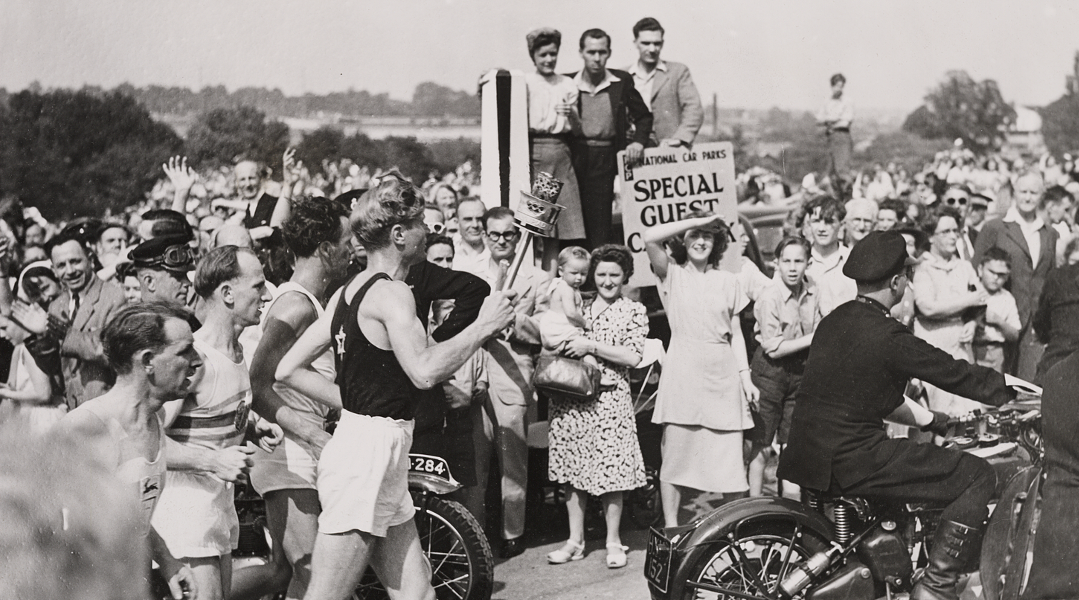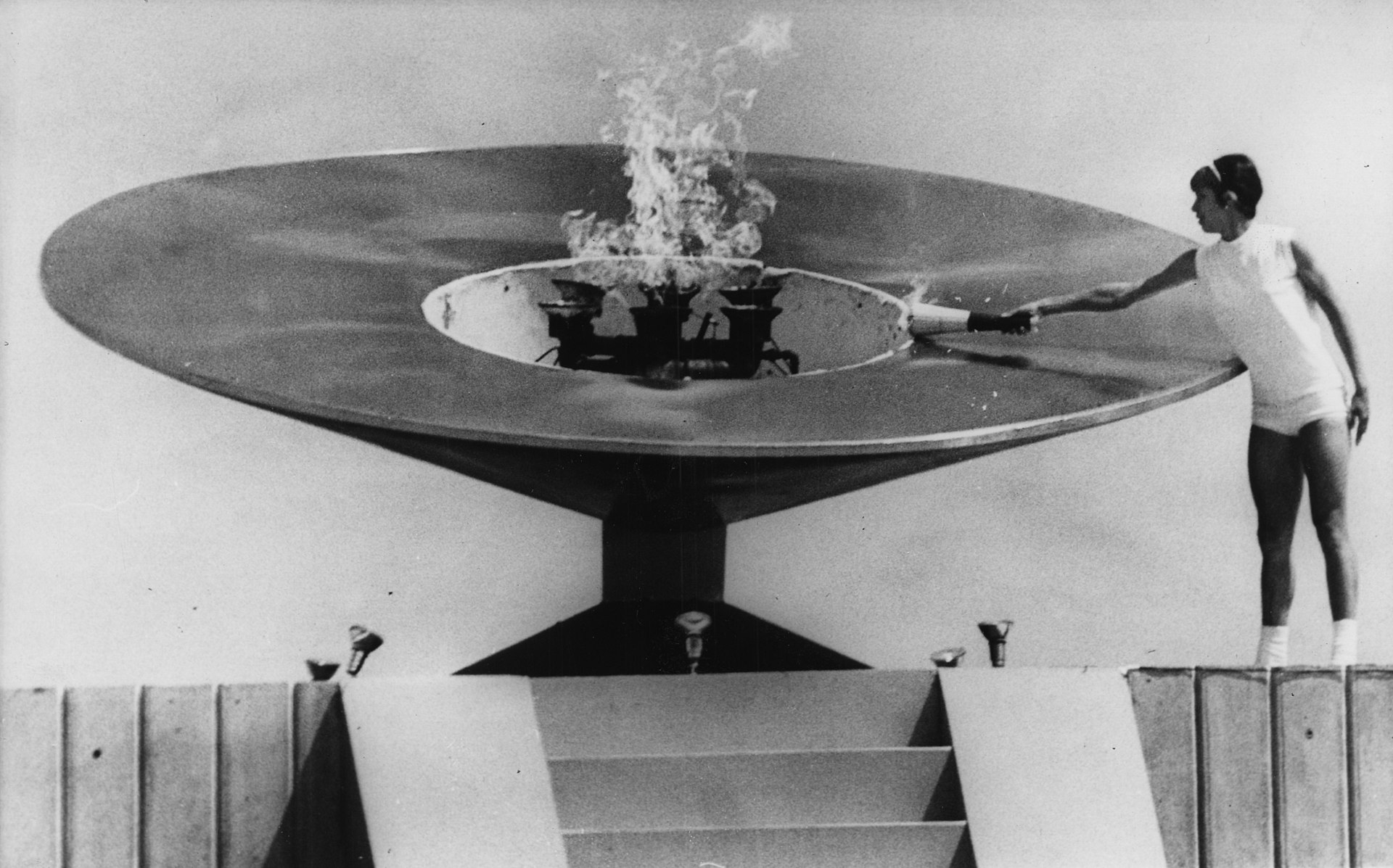On 26 July 2024, the Olympic flame will be brought to the opening ceremony of the Paris Olympic Games to officially launch the summer games. But before reaching the Olympic cauldron, where the flame will remain lit for the duration of the games, the flame has had a 7,000 miles long journey – and a millennia-long history.
A MODERN HISTORY ROOTED IN ANTIQUITY
Our modern Olympic Games are a reimagining of a 2,500 year old sporting event that took place at the sanctuary of Olympia in Ancient Greece. While the torch is a contemporary invention, it’s still rooted in ancient traditions. The flame is both inspired by perpetually lit fires in the temples of the gods at Olympia, and torch races which took place in Ancient Athens.
The first modern games took place in Athens in 1896, but it wasn’t until the 1936 Berlin Games that the torch made its first appearance. Since then, it’s become a symbol of the Games and an integral part to the festivities.
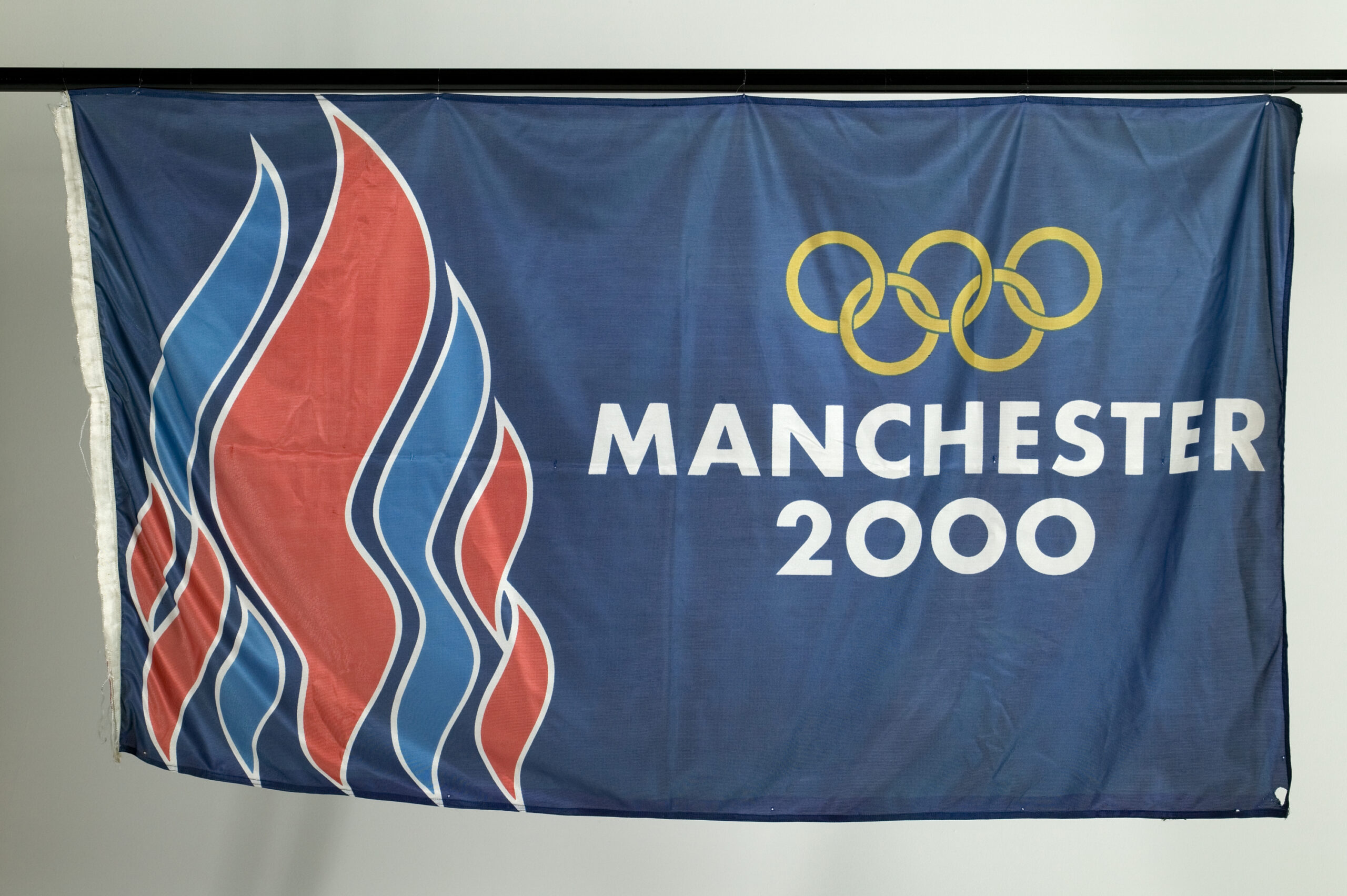
HOW IS THE OLYMPIC TORCH LIT?
Paying homage to its Greek history, the journey of the torch always begins at Olympia. A few months before the opening ceremony, a flame is lit in front of the temple of Greek goddess Hera with an ancient fire making technique: using the heat of the sun. Using a parabolic mirror, the sunrays are concentrated and captured at the centre of a vessel, causing an intense heat which creates a flame once put in contact with a torch.
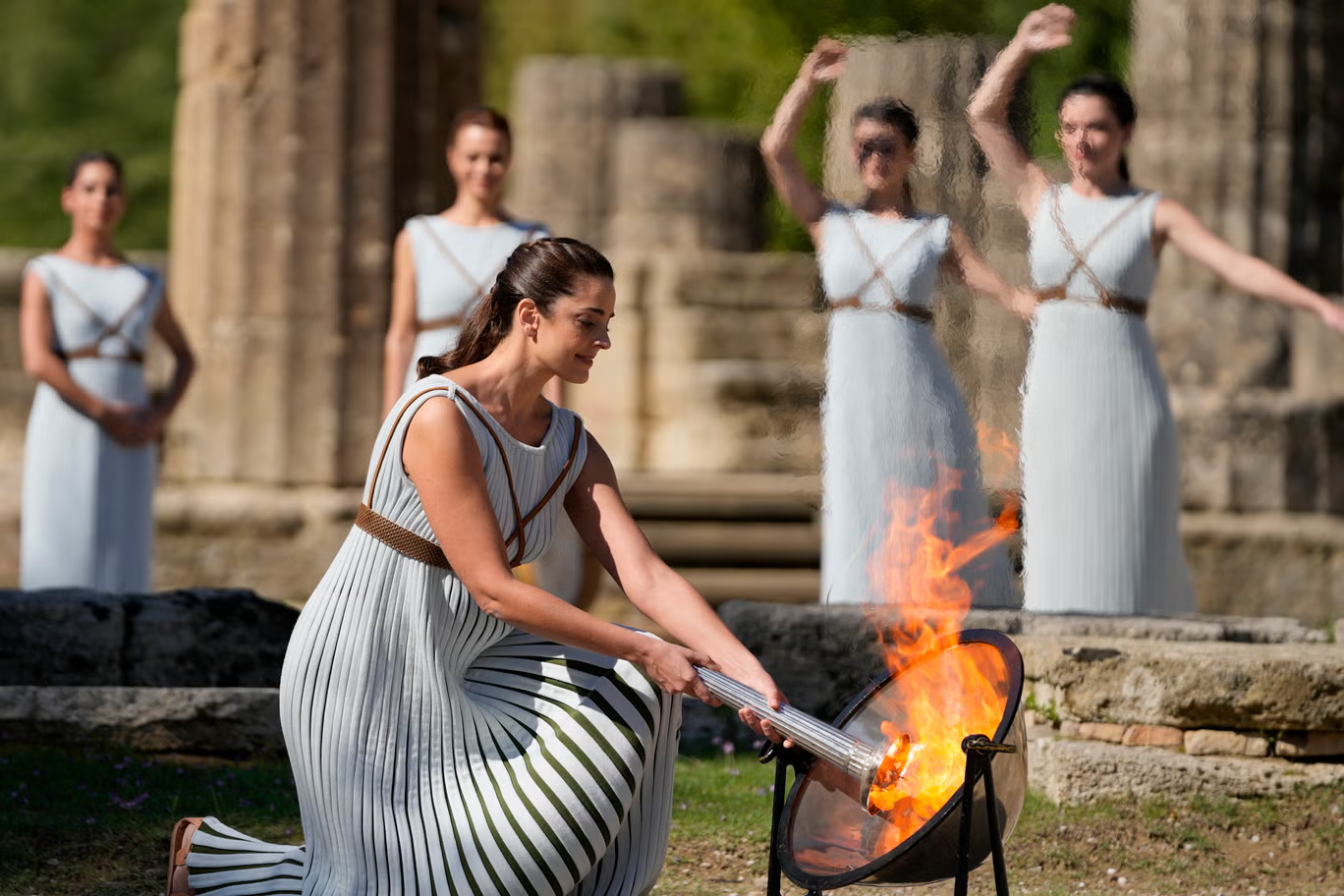
WHAT IS THE OLYMPIC TORCH RELAY?
Once lit, the torch can begin its journey to the host city of the games, relayed by torchbearers. Until 2010, the flame travelled through many countries before reaching its final destination: nowadays, it only travels through Greece, and is directly transported to the host country after arriving in Athens.

The first two torch relays, including the London 1948 one, were exclusively carried out on foot by male athletes. As the games became more international and open, methods of transport and torchbearers became more diverse. Winter games saw athletes on ice skates (Cortina 1956) or skis (Oslo 1952). The flame has boarded a plane, travelled the seas on boats, and even broken the speed of sound on a Concord flight for the Albertville 1992 games. The torch has been underwater at the Great Barrier Reef for the Sydney 2000 relay, during which it was also carried into space by astronauts. In 2013, it made its first spacewalk – although not lit! – for the Sochi Games.
In 1968, Mexican track field athlete Enriqueta Basilio became the first woman to light the Olympic cauldron. Since then, women have been torchbearers too, and disabled athletes were also invited to carry the flame. Becoming more and more open, the Games moved away from only athletes, and any person could now be selected by the organising committee. For the 2012 London games, 8000 torch-bearers were selected from tens of thousands of applications received online across the country, and 10,000 people across France and its overseas regions have carried the Olympic flame towards Paris this year.
HOW DOES THE OLYMPIC TORCH REMAIN LIT?
With torch relays becoming more and more unique to each game, so the design of the torch has evolved to replicate this. The 2012 London torch had 8,000 circular holes, symbolising the 8,000 torch bearers that carried it across the country.
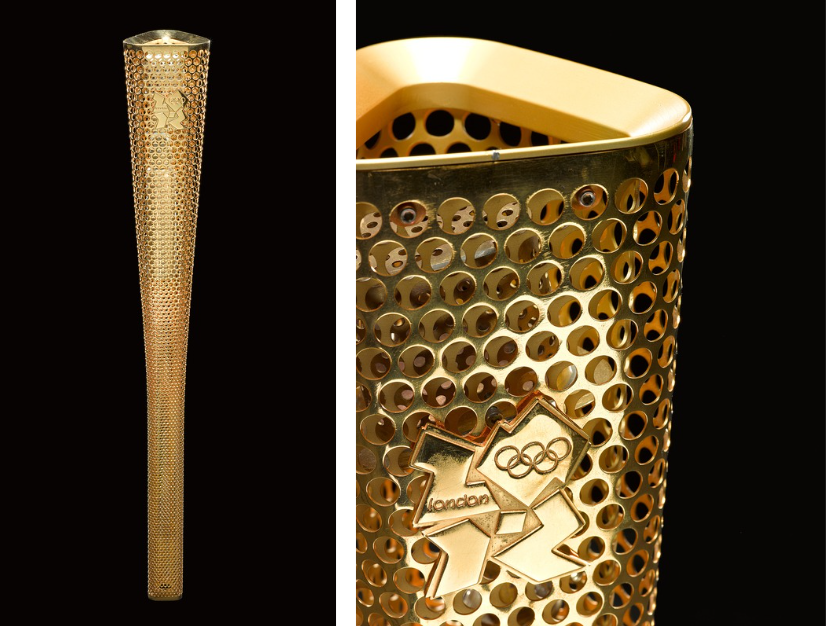
Beyond style, the torch also needs to be efficient: come rain or shine, the Olympic flame must remain lit. These days, a gas cartridge in the body of the torch keeps the flame from going out. When travelling on a plane, the flame is sheltered in a security lamp, similar to a miner’s lamp. To make sure that the torch stays lit until it reaches the Olympic cauldron at the opening ceremony, other ‘iterations’ of the flame are kept safe alongside the torch, which all come from the same flame lit back in Olympia.
The flame remains lit in the Olympic cauldron for the duration of the games and is only extinguished at the closing ceremony – only to be reignited when the next games and relay start again – which will be in Milan and Cortina d’Ampezzo, in Italy, from 6 to 22 February 2026 (for the Winter Olympics), and Los Angeles, USA, from 14 to 30 July 2028 (for the Summer Games).
